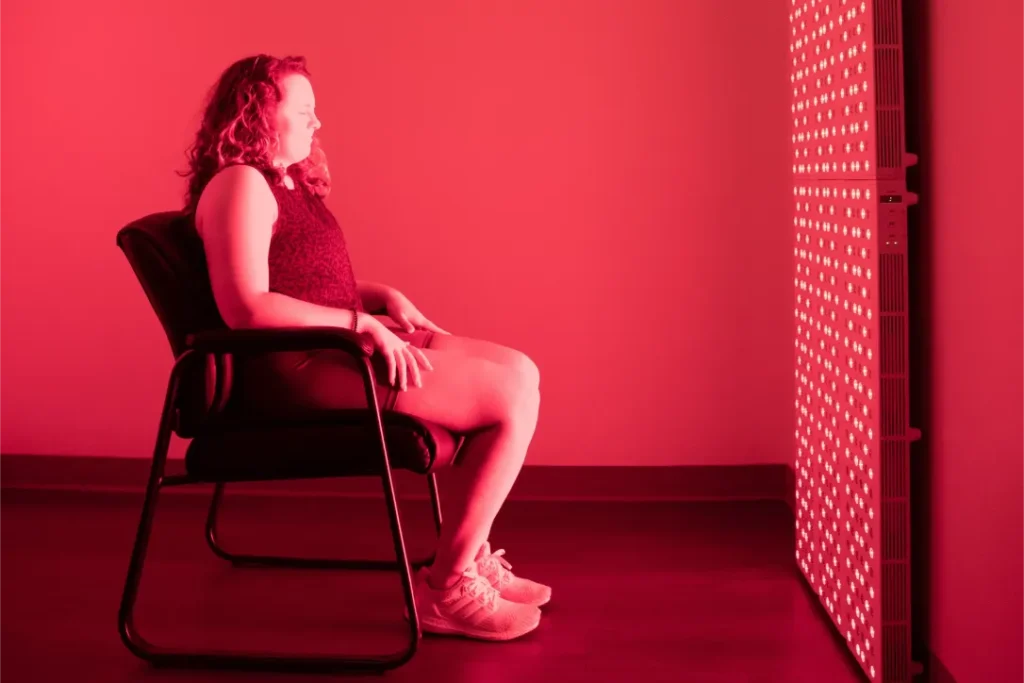Have you ever wondered how red light therapy could revolutionize your fitness journey? This cutting-edge technology, not just a futuristic concept, is already making waves in the wellness and fitness communities.
What is Red light therapy?
Red light therapy, a non-invasive treatment, uses low-wavelength red light to penetrate deep into the skin. It’s not just any light; it’s a specific kind that has been found to have various health benefits.
The magic lies in the light’s ability to stimulate cellular activity and improve mitochondrial function. This process, known as photobiomodulation, essentially ‘charges’ your cells, leading to various potential health benefits.
Benefits for Fitness Enthusiasts
Here is how you can take advantage of Red light therapy to boost your fitness progress:
Enhancing muscle recovery
One of the most remarkable benefits of red light therapy for fitness enthusiasts is its potential to enhance muscle recovery. This therapy may help reduce muscle fatigue and soreness experienced after intense physical activities.
When muscles are exposed to red light, it stimulates the mitochondria, often referred to as the ‘powerhouse of the cell,’ enhancing their ability to produce energy. This process may not only speed up the recovery of muscle tissues but also promote muscle growth by increasing cellular regeneration and repair.
Reducing discomforts
Red light therapy is also known for its potential ability to assist in reducing discomforts, particularly those associated with physical strain and overexertion. The therapy works by penetrating the skin and tissues to assist in reducing inflammation. It helps in soothing strained muscles, reducing swelling, and alleviating general body aches that can result from rigorous physical activity.
The non-invasive nature of red light therapy makes it an attractive alternative to pain medication, offering relief without the potential side effects of pharmaceuticals.
Improving sleep
Improving sleep quality is another less discussed but equally important potential benefit of red light therapy. Good sleep is crucial for muscle recovery and overall well-being, especially for individuals engaged in regular physical activity. Red light therapy may positively affect sleep by regulating the production of melatonin, a hormone that plays a vital role in the sleep-wake cycle.
This improved sleep quality ensures that the body gets enough rest, which is essential for the repair and rejuvenation of muscles, tissues, and joints.
For fitness enthusiasts, integrating red light therapy into their routine can mean not only better performance but also enhanced recovery and overall well-being through better sleep.
Conclusion
Red light therapy offers a plethora of benefits for fitness enthusiasts. From speeding up muscle recovery to reducing discomforts and assisting sleep, it’s a valuable tool in any athlete’s arsenal.







